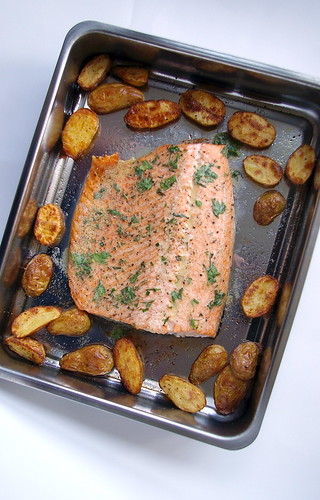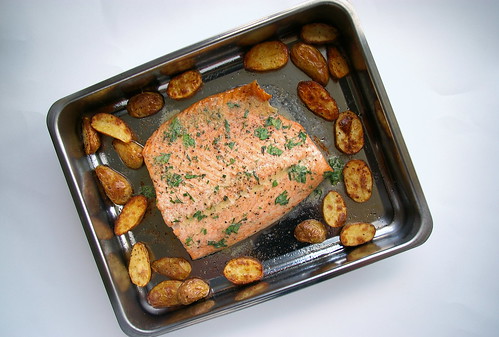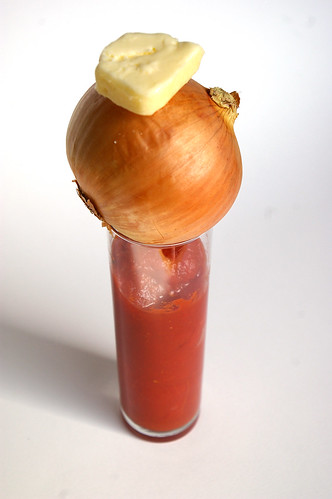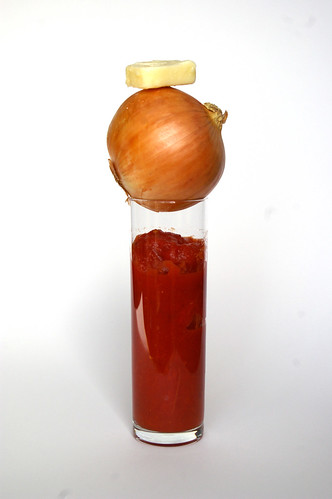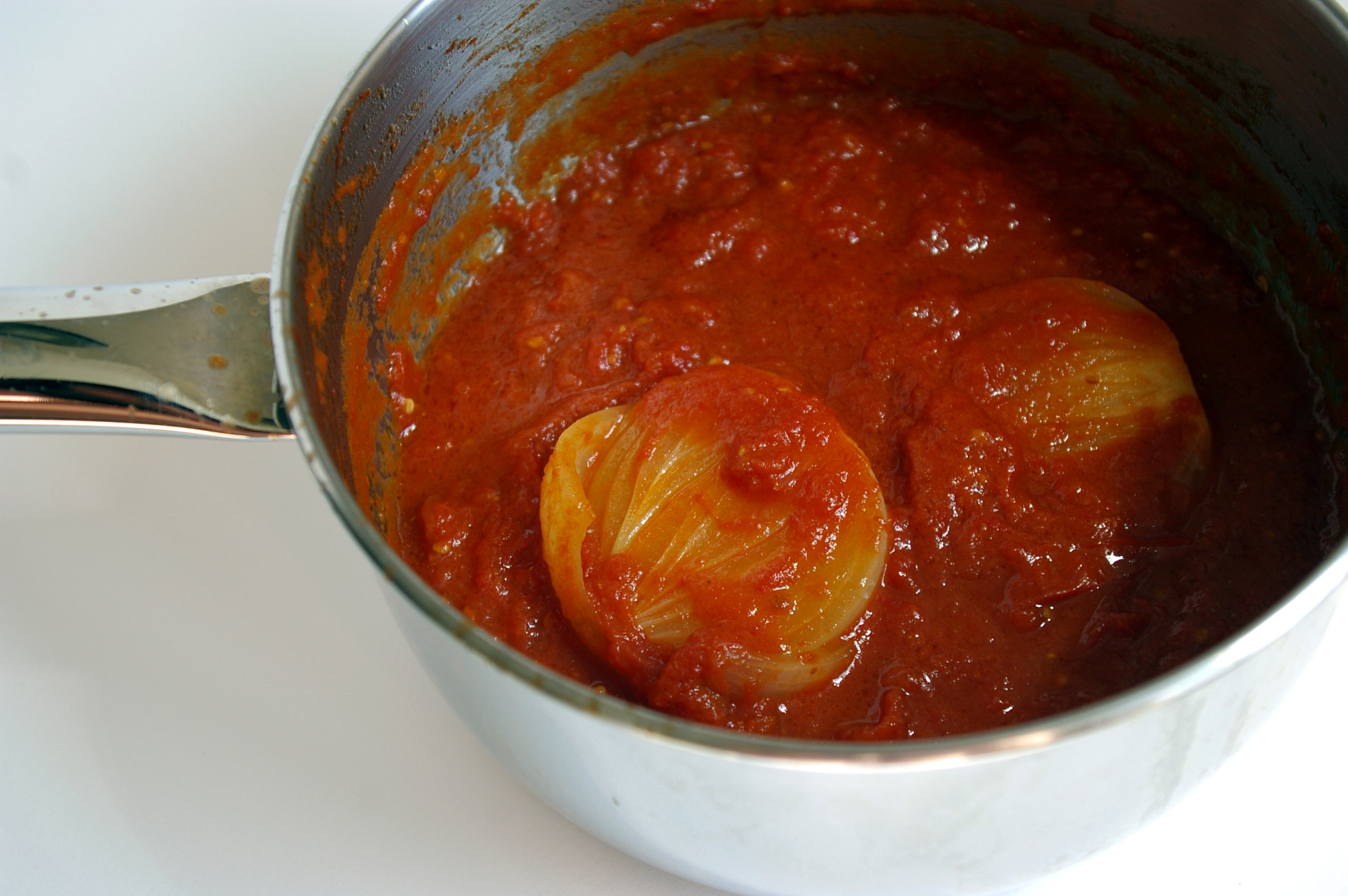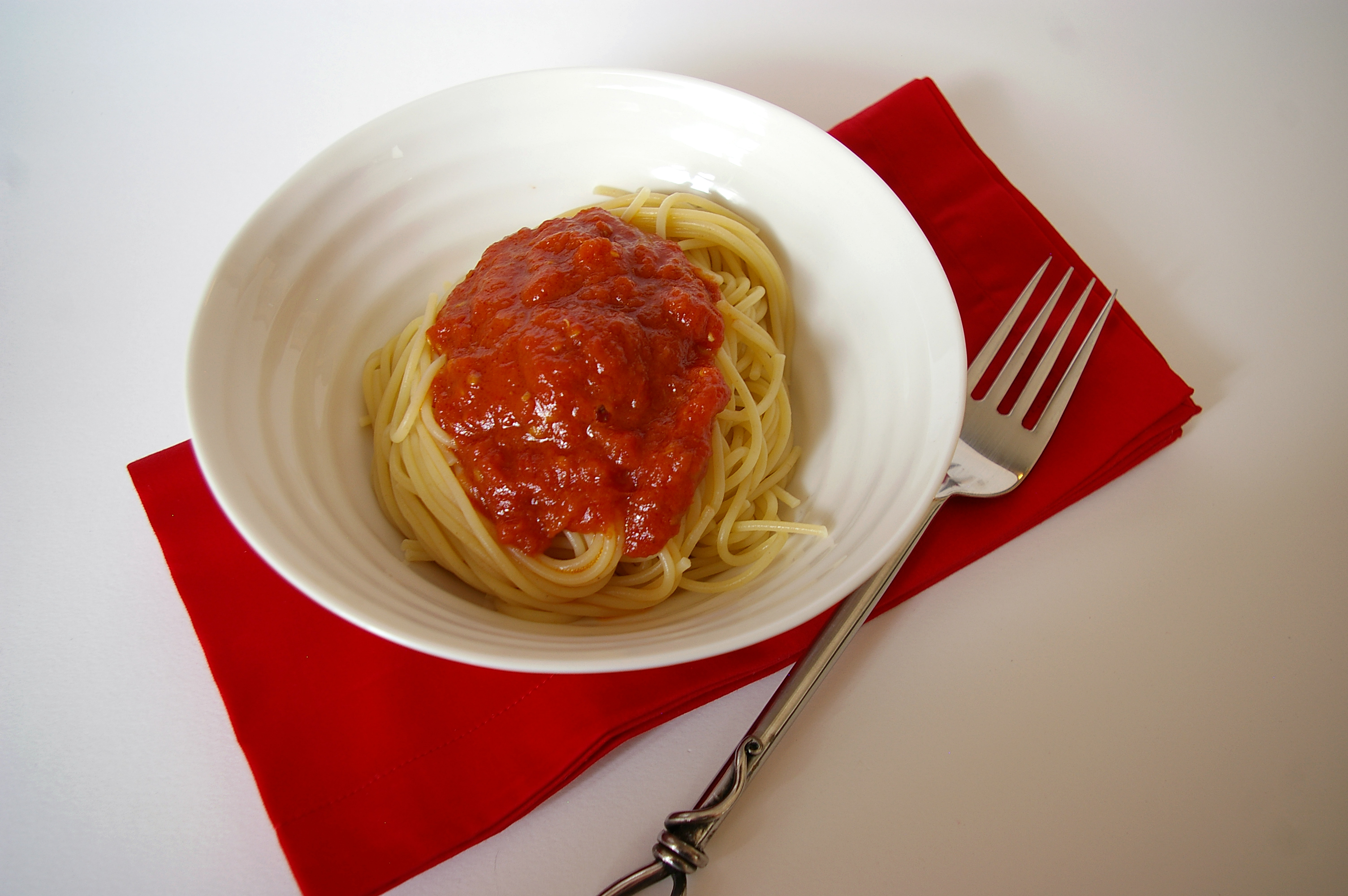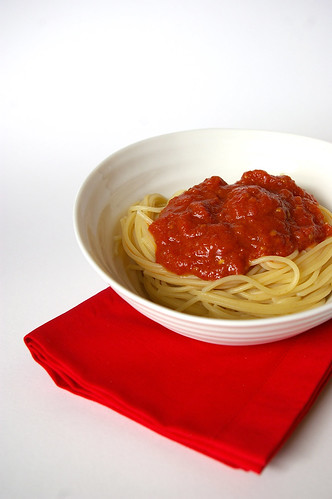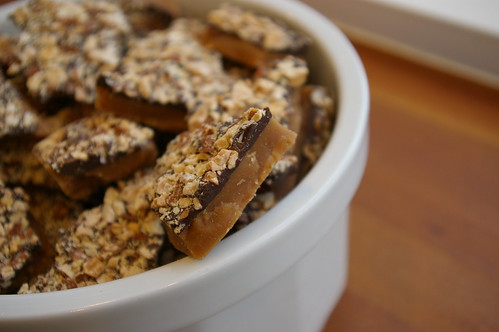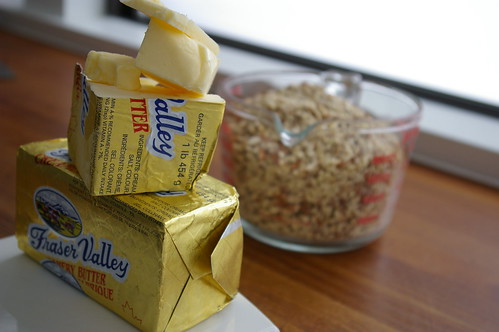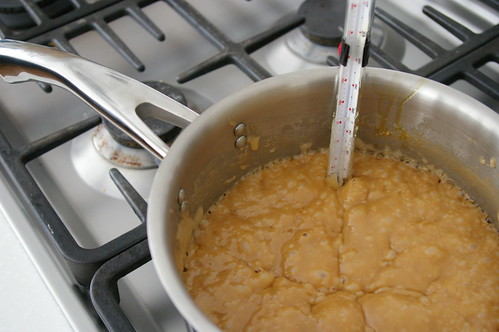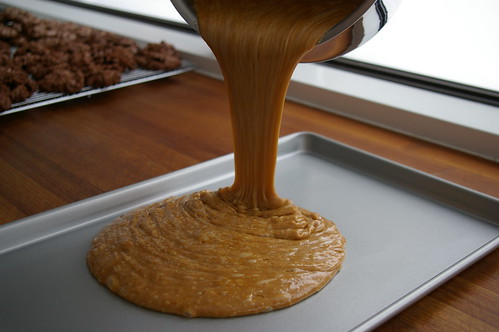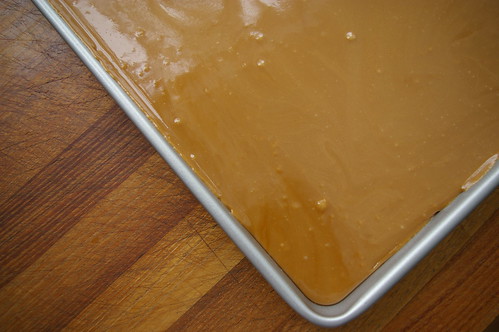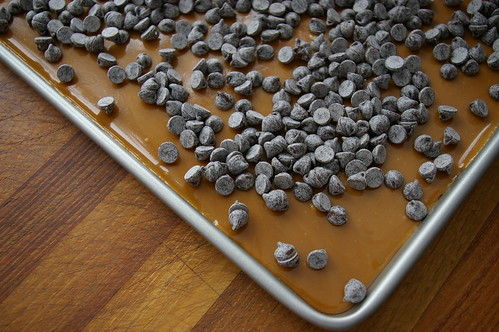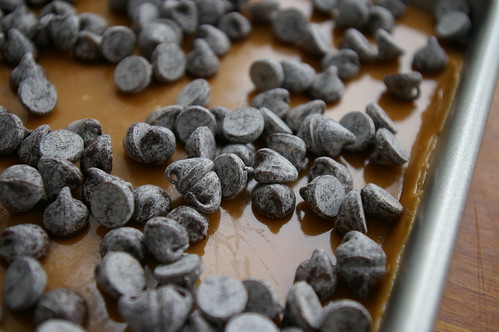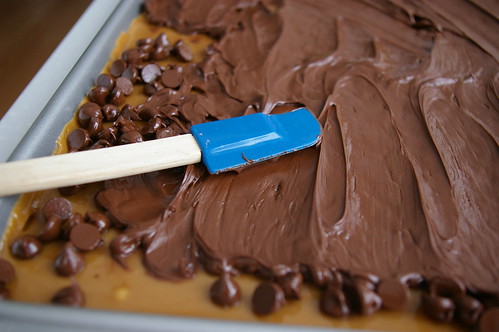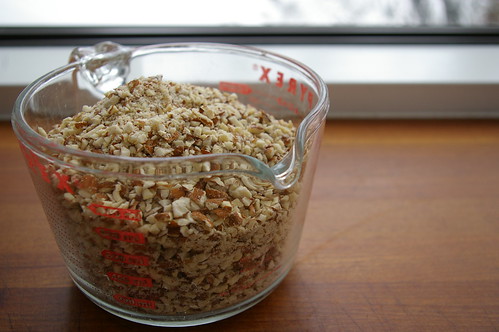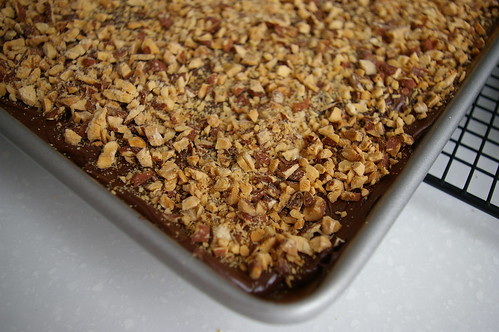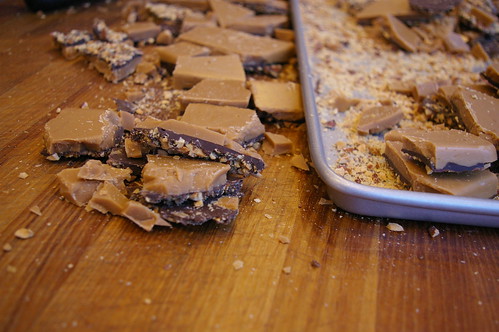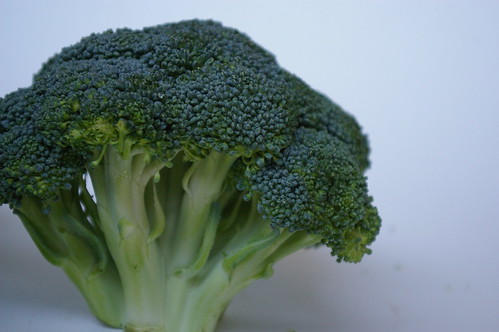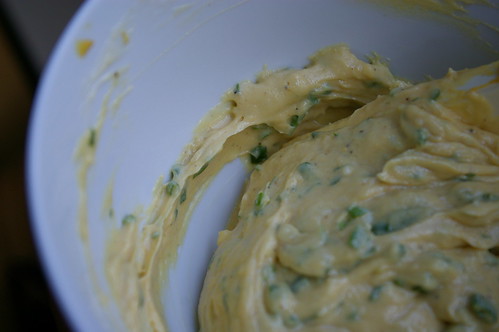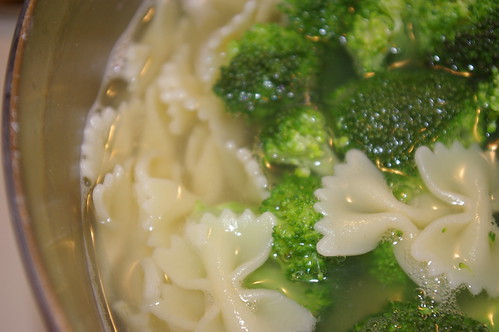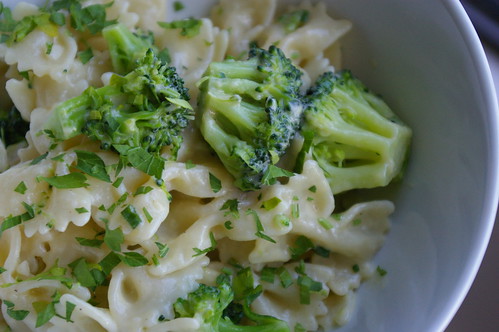Some meals are made perfect simply by the company and the conversation.
There’s something about gathering together good friends and good food that makes a meal so much greater than the sum of its parts.
The first time I had this Roast Salmon and Potatoes with Mustard-Herb Butter was in Edmonton while visiting friends. For the last day of the weekend, we decided to have some fun in the kitchen and, after flipping through Martha Stewart’s Dinner at Home, we settled on it.
A trip to the farmers’ market netted us the fingerling potatoes and herbs, a stop at the fishmonger, the salmon, and the final stop was at the wine store for some rose. (I drink what I like and do not profess to know anything about pairings; but I did like this match.)
The recipe comes together so quickly that there was more time to chat and set the table for the early afternoon meal.
And when the coral pink salmon and lightly browned potatoes came out of the oven and we smothered on the green-flecked butter, we knew it was going to be good.
But it was the combination of the rich salmon, crisp-edged potatoes and fresh herbs, along with the crisp rose and the inevitable laughs and conversation that made the the meal so memorable. That said, when I made it again Monday night, alone in my apartment, and ate it with a now-requisite glass of rose, it was still incredibly tasty.
The Dijon is not overwhelming and the rich fish is brightened by the slight mustard tang and fresh herbs.
And I love the idea of a one-pan dish, particularly since I’m the one doing the dishes.
Maybe that’s another great reason why this should be enjoyed with friends.
Roast Salmon and Potatoes with Mustard-Herb Butter
I’ve had this with fingerling potatoes, which are great, but this time around I used the more readily available Yukon Golds.
- 1 tbsp plus 2 tsp (25 mL) extra-virgin olive oil, plus more for the pan
- 1 lb (500 g) fingerling potatoes, halved lengthwise
- coarse salt and freshly ground pepper
- 2 lb (1 kg) fillet salmon, skin on
- Mustard-Herb butter (see below)
- fresh herbs, plus more leaves for garnish
Preheat oven to 400°F (200°C). Brush the bottom of a roasting pan with oil. Place potatoes in pan; season with 3/4 tsp (3 mL) salt and a pinch of pepper, and drizzle with 1 tbsp (15 mL) oil. Toss to coat, and spread in a single layer.
Roast 30 minutes, turning with a spatula after potatoes begin to turn golden underneath (about 20 minutes). Season salmon on both sides with salt and pepper. Push potatoes to edges of pan, and place salmon, skin side down, in centre of pan. Brush with remaining 2 tsp (10 mL) oil, and roast until salmon barely flakes on the edges when pressed, 25 to 28 minutes for medium-rare (it will still be pink in the centre). Brush salmon and potatoes with herb butter while still hot.
Serve, garnished with herbs. Serves 4.
Mustard-Herb Butter
While the original recipe calls for chervil, thyme and parsley, I used dill, tarragon and parsley.
Use what you like or what you have on hand. I didn’t use all of the butter, so don’t feel you need to put it all on. Stewart suggests it goes well with roasted, grilled or broiled fish, chicken or pork.
I’m thinking of roasting the rest of my potatoes and tossing it with them.
- 1/2 cup (125 mL) unsalted butter, room temperature
- 1 tbsp (15 mL) Dijon mustard
- 1/4 cup (50 mL) tightly packed small herb leaves, such as parsley, thyme and chervil, plus more for garnish
- coarse salt and freshly ground pepper
Stir butter and mustard together in a small bowl until smooth. Stir in the herbs and season with 1/4 tsp (1 mL) salt and 1/8 tsp (0.5 mL) pepper, or to taste.
(The compound butter can be made ahead, rolled tightly in parchment paper to form a log, and then wrapped in plastic; store in the refrigerator up to 1 week, or in the freezer up to 1 month.)
This article first appeared in the Calgary Herald. For more recipes and meal ideas, check out CalgaryHerald.com/food.

